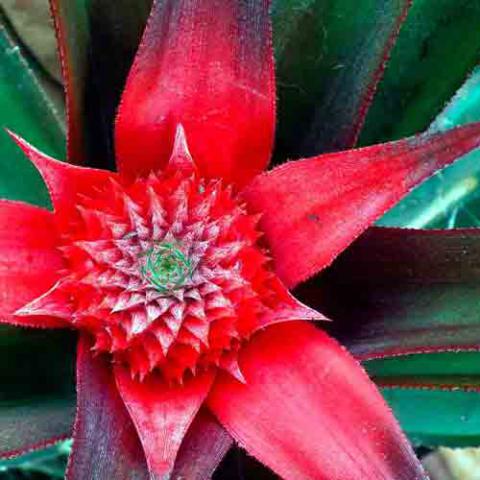NAME(S)
TAXONOMY
PLANTAE ID
THERAPEUTIC
China
Issued:
Stamp:
Ananas comosus
Ghana
Issued:
Stamp:
Ananas comosus
Malaysia
Issued:
Stamp:
Ananas comosus
Nicaragua
Issued:
Stamp:
Ananas comosus
China
Issued:
Stamp:
Ananas comosus
Ghana
Issued:
Stamp:
Ananas comosus
Malaysia
Issued:
Stamp:
Ananas comosus
Nicaragua
Issued:
Stamp:
Ananas comosus
China
Issued:
Stamp:
Ananas comosus
Ghana
Issued:
Stamp:
Ananas comosus
Malaysia
Issued:
Stamp:
Ananas comosus
Nicaragua
Issued:
Stamp:
Ananas comosus
Genus species (Plantae): Ananas comosus
The pineapple (Ananas comosus) is a tropical plant with an edible fruit and the most economically significant plant in the family Bromeliaceae. The pineapple is indigenous to South America, where it has been cultivated for many centuries. The introduction of the pineapple to Europe in the 17th century made it a significant cultural icon of luxury. Since the 1820s, pineapple has been commercially grown in greenhouses and many tropical plantations. Further, it is the third most important tropical fruit in world production. In the 20th century, Hawaii was a dominant producer of pineapples, especially for the US; however, by 2016, Costa Rica, Brazil, and the Philippines accounted for nearly one-third of the world's production of pineapples.
Pineapples grow as a small shrub; the individual flowers of the unpollinated plant fuse to form a multiple fruit. The plant is normally propagated from the offset produced at the top of the fruit, or from a side shoot, and typically mature within a year.
Botany
The pineapple is a herbaceous perennial, which grows to 1.0 to 1.5 m (3.3 to 4.9 ft) tall, although sometimes it can be taller. In appearance, the plant has a short, stocky stem with tough, waxy leaves. When creating its fruit, it usually produces up to 200 flowers, although some large-fruited cultivars can exceed this. Once it flowers, the individual fruits of the flowers join together to create a multiple fruit. After the first fruit is produced, side shoots (called 'suckers' by commercial growers) are produced in the leaf axils of the main stem. These may be removed for propagation, or left to produce additional fruits on the original plant. Commercially, suckers that appear around the base are cultivated. It has 30 or more long, narrow, fleshy, trough-shaped leaves with sharp spines along the margins that are 30 to 100 cm (1.0 to 3.3 ft) long, surrounding a thick stem. In the first year of growth, the axis lengthens and thickens, bearing numerous leaves in close spirals. After 12 to 20 months, the stem grows into a spike-like inflorescence up to 15 cm (6 in) long with over 100 spirally arranged, trimerous flowers, each subtended by a bract.
The ovaries develop into berries, which coalesce into a large, compact, multiple fruit. The fruit of a pineapple is usually arranged in two interlocking helices, Typically there are eight in one direction and 13 in the other, each being a Fibonacci number.
The pineapple carries out CAM photosynthesis, fixing carbon dioxide at night and storing it as the acid malate, then releasing it during the day aiding photosynthesis.
Reference: Wikipedia







